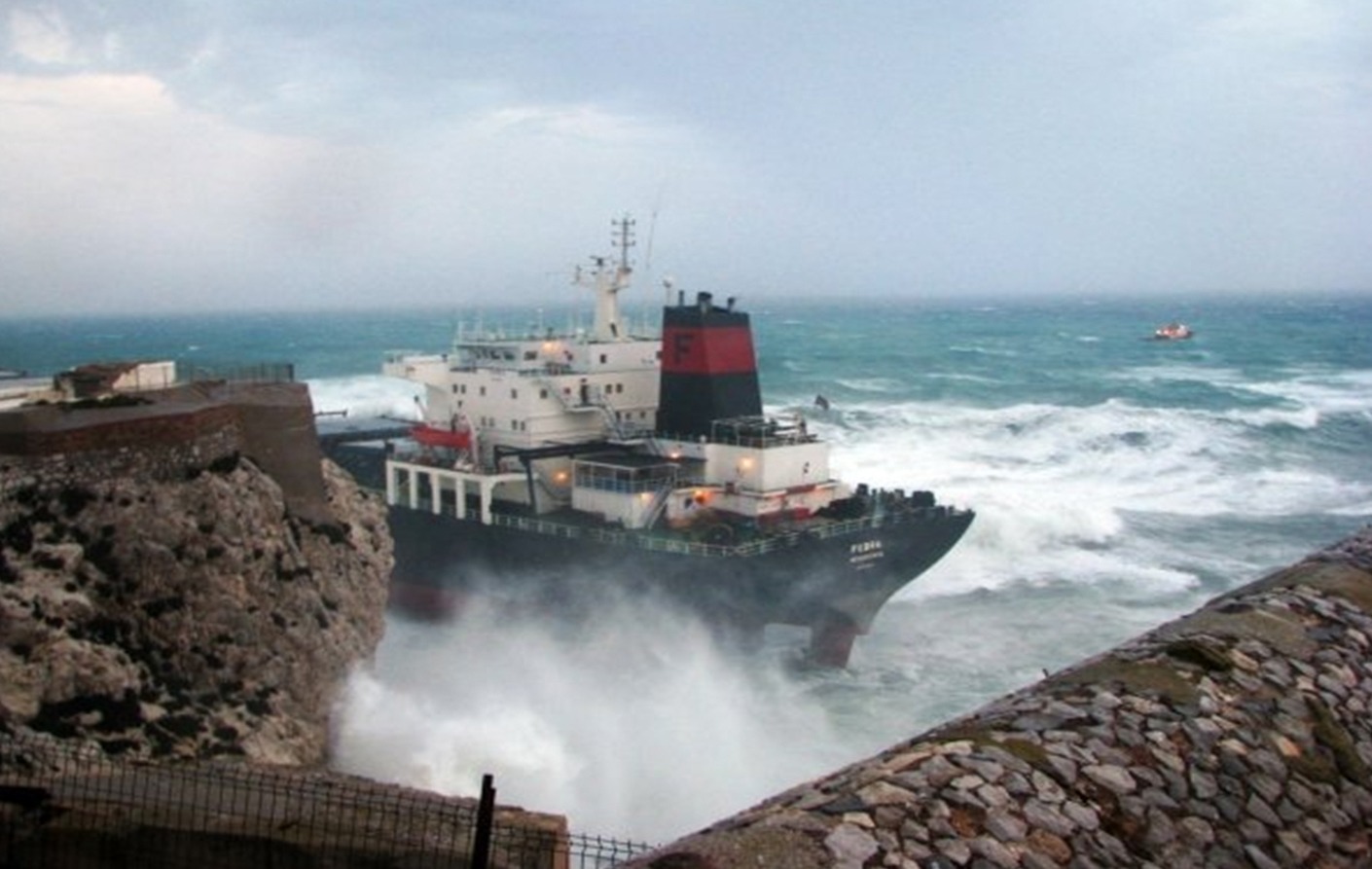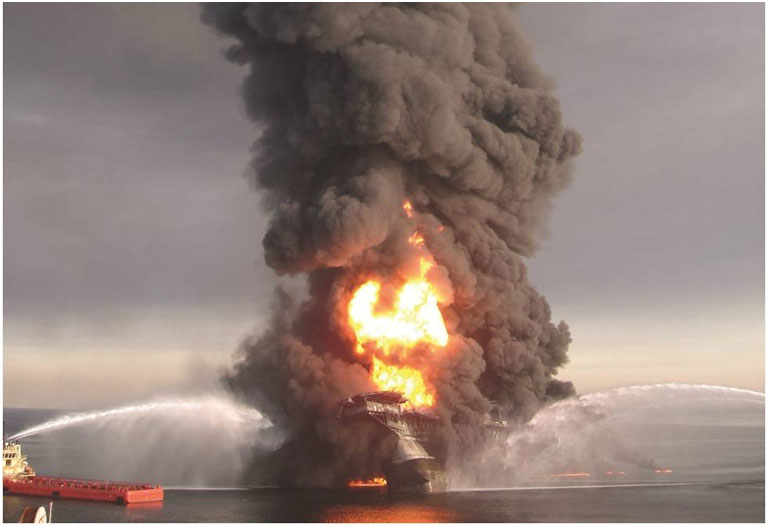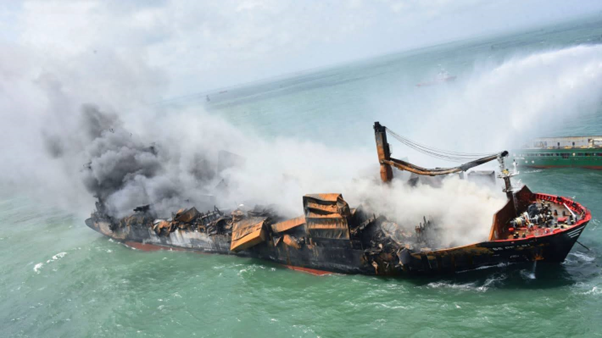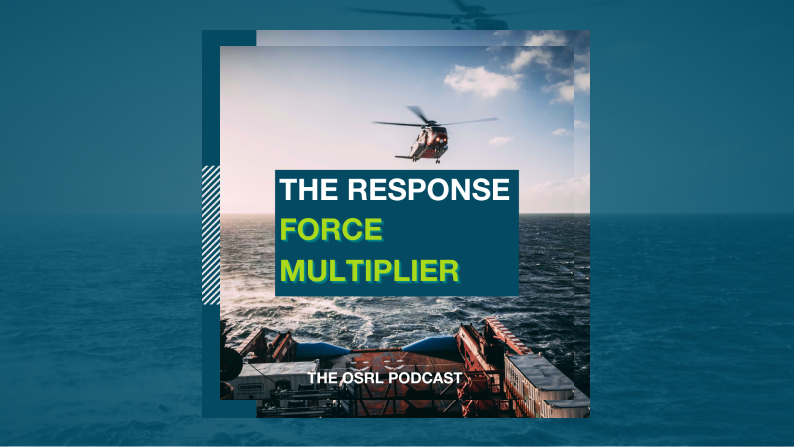Spill Journal: MV Fedra
MV Fedra was a Liberian-registered bulk-carrier cargo ship. It ran aground and smashed against Europa Point, the southernmost tip of Gibraltar, on the 10 October 2008, following severe gale force winds measuring 12 on the Beaufort scale.
Incident Timeline
10 October
MV Fedra drags anchors in force 9-10 winds. She has suffered engine failure and goes aground at Europa Point. The initial priority of the Port Authorities and emergency services is the rescue of all 31 crew members onboard. This is made difficult by extremely bad weather conditions which persist throughout the night.
11 October
First light allows initial assessment of the incident. MV Fedra has broken her back just forward of the engine room bulkhead. The stern section, carrying an estimated 300 tonnes of Heavy Fuel Oil (HFO) & 50 tonnes of diesel in wing tanks, is being pushed on to the rocks.
12 October
OSRL responders arrive.
13 October
Response operations start in earnest. Site Response Plans (SRPs) are conducted and OSRL equipment is distributed as directed. OSRL responders are assigned areas and given small work forces to execute the plans and start the recovery operation. A protection booming strategy is deployed to protect any water intakes for the desalinisation plants, and any areas of commercial significance such as the marina.
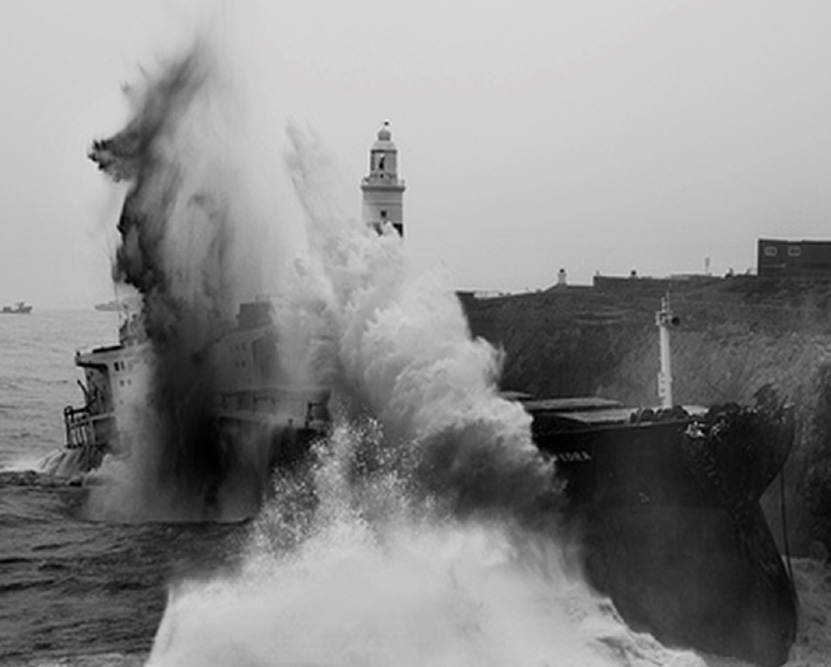

OSRL Mobilisation
OSRL’s objectives were to:
- Prioritise sites according to sensitivity, proximity to water intakes, public exposure, impacted oil volume and access
- Employ suitable response techniques for each site
- Clean sites that were exposed to the public to the highest standard
- Provide advice and technical support to the Client and assist the local governments
Models can be used to help predict; how long oil will be at sea for, its direction of travel and how it is likely to weather over time. They can be used to help plan a response, highlighting areas which may be at risk and allowing preparations to be made in advance, such as the selection of suitable equipment.
To gain an understanding of the local current conditions around MV Fedra, and how the weather and sea temperature could affect the behaviour of the spilled oil, a modelling programme was used. Information such as; oil type, quantity, location of the spill and predicted weather were inputted to make the scenario as detailed and specific as possible. A trajectory was produced providing a visual resource of the predicted direction of travel.
Aerial surveillance was used to try and identify how much oil had entered the water, how much the slick had broken up and its direction of travel. It was used in conjunction with the modelling to help plan where the oil may end up and to further the response strategy.
Personnel and Equipment
Trained OSRL personnel were despatched to conduct detailed assessments of the coastline identified as being at risk from the spilled oil. These assessments identified the environmental sensitivities at each site and what the most appropriate response strategy should be implemented. Using this information, sites were prioritised and suitable equipment quickly dispatched to allow operations to begin.
The calm conditions experienced during most of this period permitted offshore containment and recovery operations; however to some extent these conditions also limited breakup of the oil.

Response Summary
MV Fedra was a Liberian-registered bulk-carrier cargo ship. It ran aground and smashed against Europa Point, the southernmost tip of Gibraltar, on the 10 October 2008, following severe gale force winds measuring 12 on the Beaufort scale.
Spanish and Gibraltarian emergency services mounted a joint rescue operation. Gibraltar declared it a Major Incident and requested the standby of additional statutory and voluntary emergency services. 5 of MV Fedra’s 31 crew members were airlifted to safety by a Spanish coast guard helicopter and the rest were hoisted up by an improvised crane system. The vessel broke in half shortly thereafter.
Roughly half of MV Fedra’s 300 tonnes of on-board HFO spilled into the sea. Some of this oil washed ashore along Gibraltar’s western coast, particularly in the area of Rosia Bay and Camp Bay. Spanish sources reported HFO from MV Fedra had washed up on some Campo beaches, having drifted as far as Tarifa. There were also slicks sighted in the Bay of Gibraltar.
MV Fedra avoided becoming a permanent shipwreck when the forward section was re-floated and towed round into the Bay of Gibraltar in February 2009. It was moored alongside the South Mole in Gibraltar Harbour. The superstructure was cut away from the hull of the aft section, and was placed in the dockside at the HM Naval Base awaiting subsequent removal.

Download the Spill Journal
Member Response Services
Guaranteed and immediate response for members, 24 hours a day, 365 days per year. We are ready to respond with our expertise and resources anytime, anywhere.




